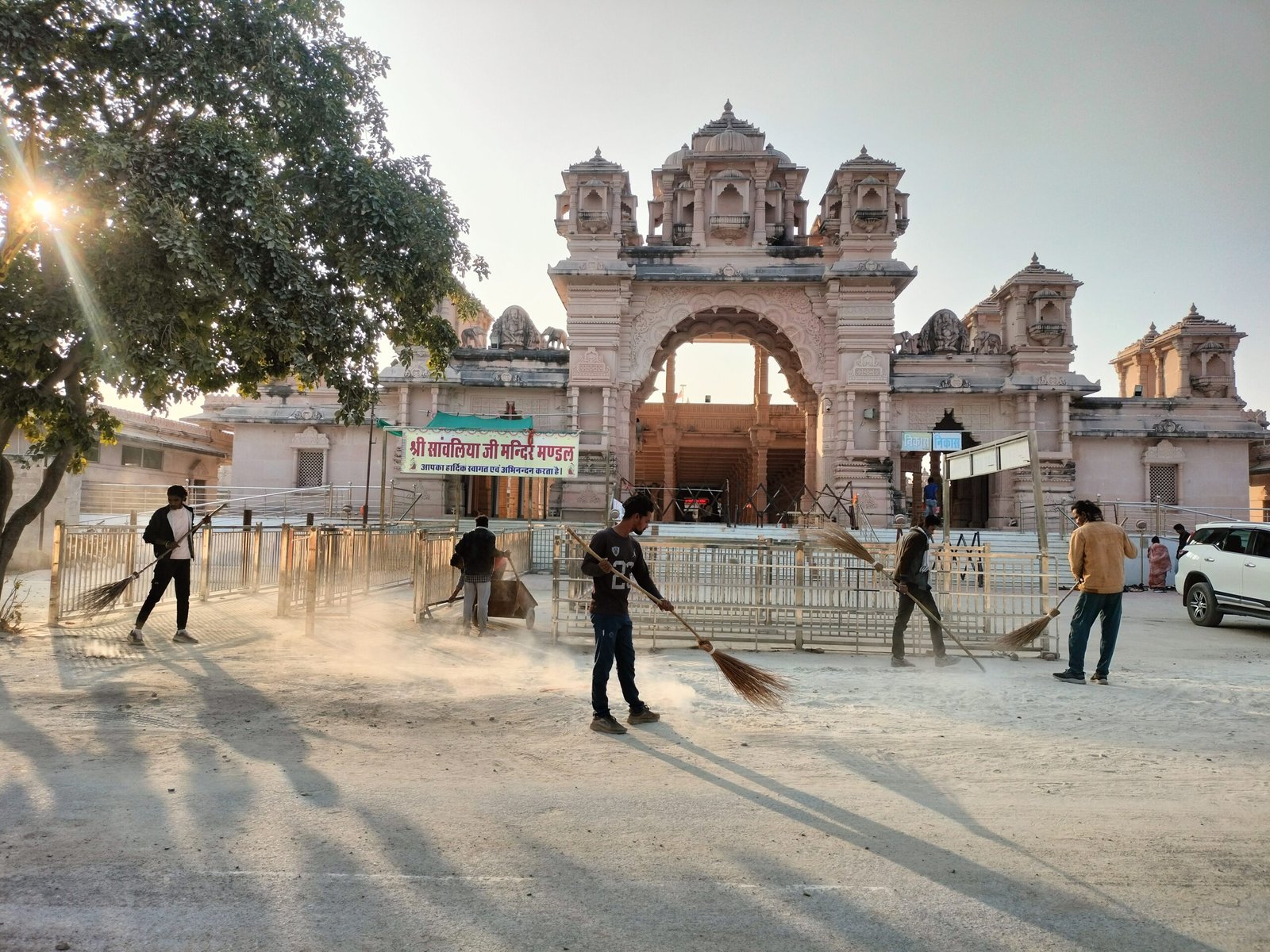
Temple Bells Show Environmental Commitment
In the enchanting district of Chittorgarh, Rajasthan, the tranquil and spiritually significant Sanwariya Ji Temple stands tall. Also known as Sanwariya Ji, this temple holds a special place in the hearts of devotees who come from Rajasthan, Madhya Pradesh, and Gujarat to seek the divine blessings of Lord Krishna. The revered temple’s origin dates back to the year 1840 when a Gwala (cowherd) named Bholaram Gurjar had a dream in his village of Bagund. In his dream, he saw three divine idols buried in the Chhapar region of the village. Following the vision, the site was excavated, and indeed, three exquisite idols of Lord Krishna were discovered – one was taken to Mandfiya, another to Bhadsoda, and the third remained at the exact spot in Bagund village where it was found. Three temples were erected to house these idols, all situated within a 5 km radius of each other. Of the three temples, the Mandfiya Temple gained prominence and is now recognized as the Sanwariya Ji Dham, the divine abode of Sanwariya Ji. Devotees throng to these temples in large numbers daily, offering flowers and other sacred offerings to Lord Krishna.
The sanctity of the place has made it a significant pilgrimage destination, drawing believers from far and wide. Mandfiya, now known as Shri Sanwariya Dham, holds the second position for Vaishnav followers after Nathdwara in Rajasthan. While the influx of devotees is a testament to the spiritual significance of Sanwariya Ji Temple, it has also presented challenges. The overwhelming numbers of devotees bringing flowers and other offerings have led to a significant issue – the improper disposal of offerings. The large quantities of floral offerings and other organic waste often end up being discarded improperly, creating a challenge for the authorities.In collaboration with FINISH Society and the Sanwariya Ji Trust, a project has been initiated to address this issue. The project focuses on the proper and dignified disposal of offerings, including the creation of incense from flowers and converting other organic waste into compost for use in the temple gardens. The initiative also includes cleanliness drives in the temple surroundings and educating devotees about the significance of maintaining cleanliness in the premises.

The project aims not only to address the immediate challenge of waste disposal but also to bring about a gradual shift in the mindset of devotees. By explaining that cleanliness is a form of worship and that Lord Krishna is pleased with cleanliness, the organizers hope to instill a sense of responsibility among the worshippers.
As the efforts are ongoing, the story of Sanwariya Ji Temple unfolds as a tale of spiritual devotion combined with a commitment to environmental sustainability. The changes being implemented reflect a harmonious blend of tradition and modern practices, ensuring that the sanctity of the temple remains intact while addressing contemporary challenges.

